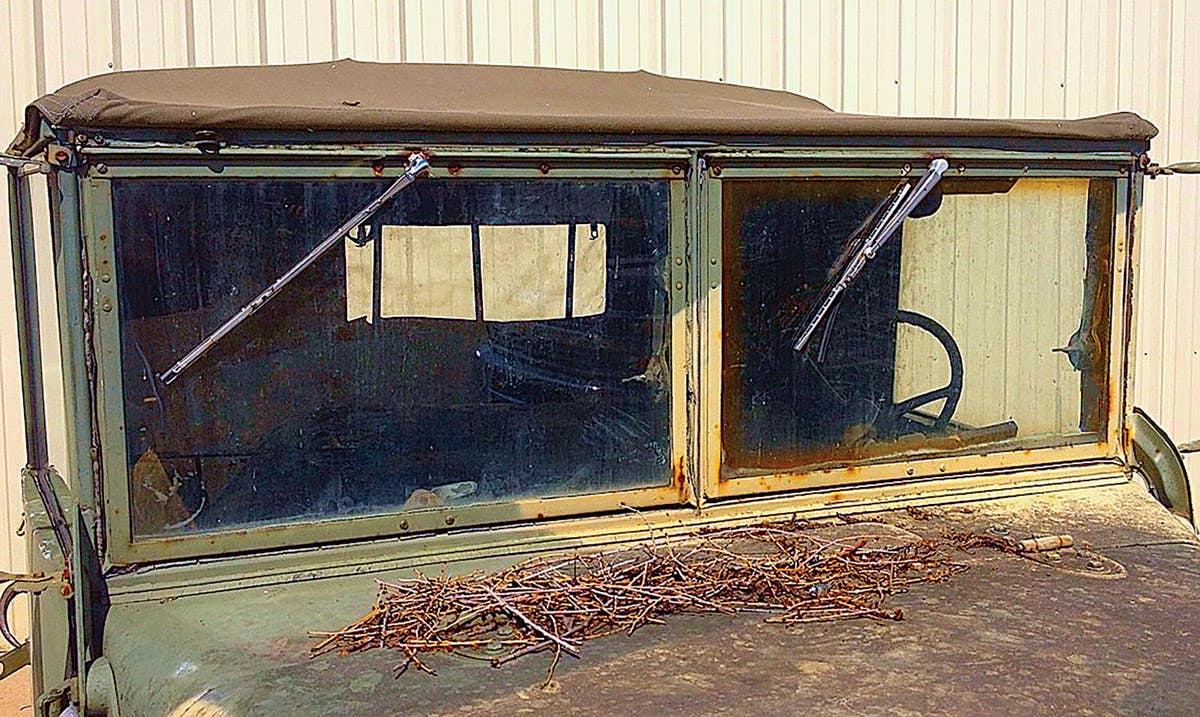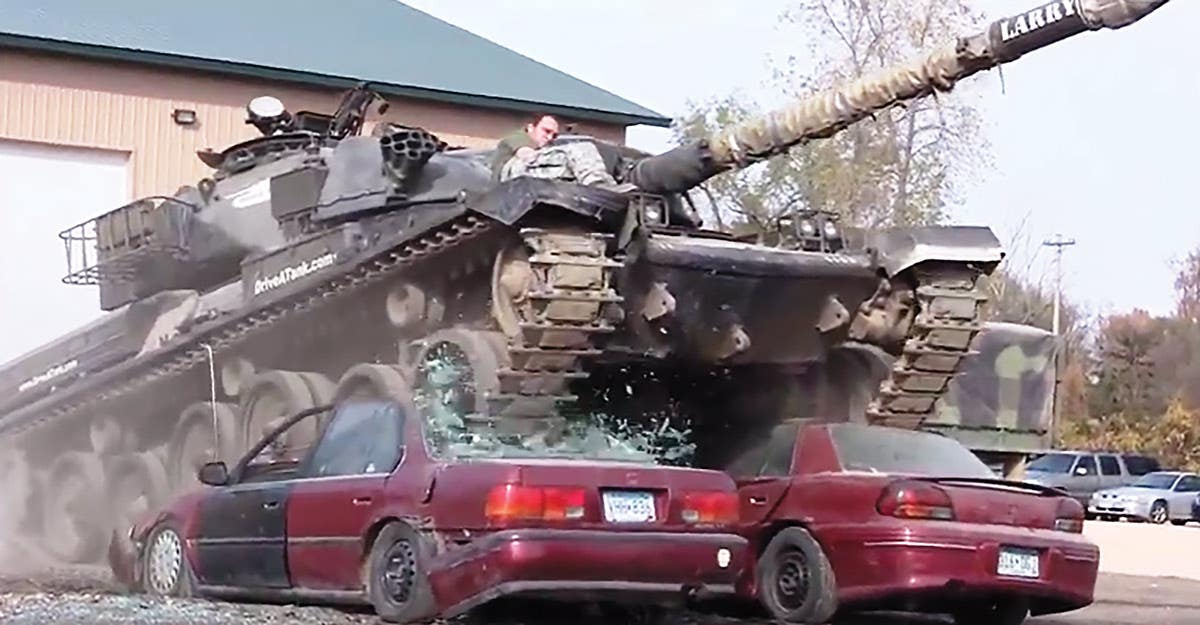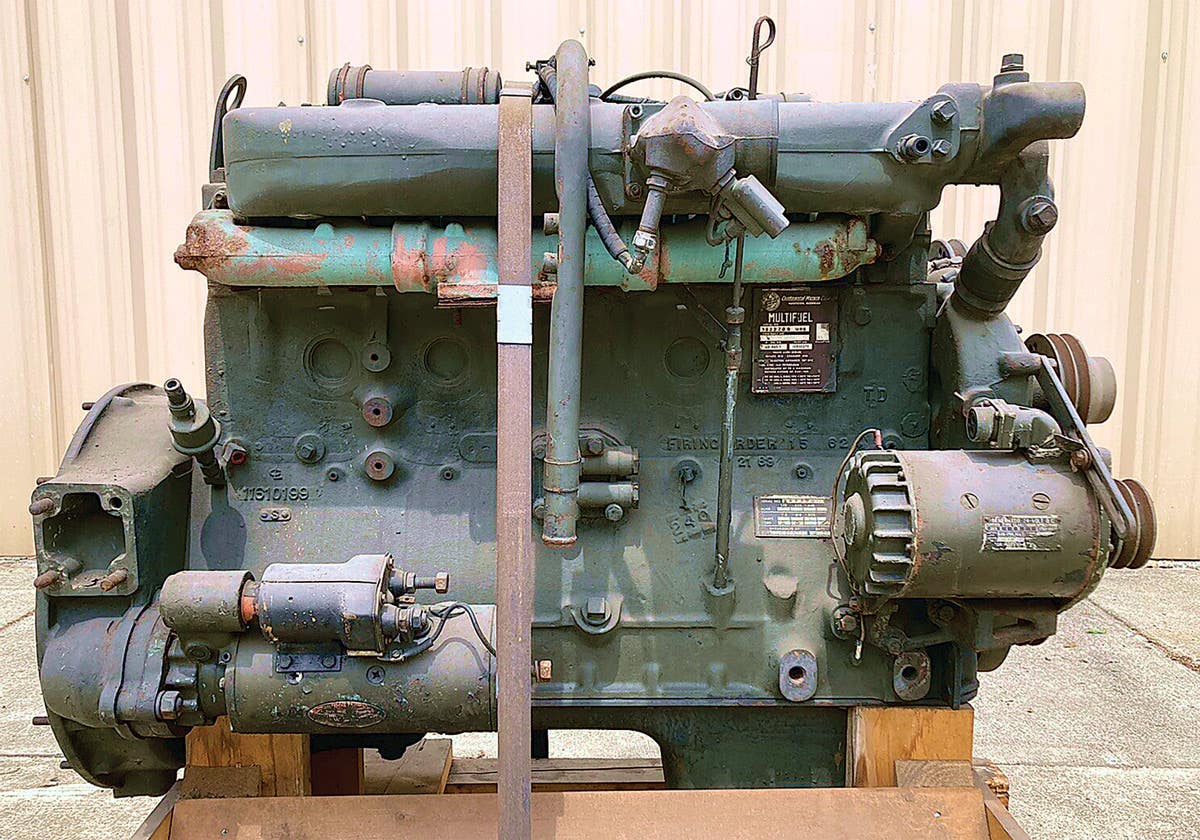Convoying Route 66
by Jerry Gardner On September 10, 2017, I left my home in East Texas, to meet up with some other vintage military vehicles. We were going to drive to Chicago…
by Jerry Gardner
On September 10, 2017, I left my home in East Texas, to meet up with some other vintage military vehicles. We were going to drive to Chicago to meet up with others who were going to drivethe Military Vehicle Preservation Association (MVPA) Route 66 Convoy to California.
The four of us headed up the interstate at 50 mph. We had to spend two nights on the road, sleepingin our vehicles in Walmart parking lots. This was not a problem because all of us were self-contained with water, generators, and sleeping quarters. We arrived in Chicago on the Sept. 12, around 6 p.m.
While in Chicago, we spent three days getting inspected and completing our paperwork to be able to make the journey down Route 66. We also were waiting for about 50 vehicles to arrive. Finally, on Sept. 15, we headed out of the fairgrounds in Wheaton, Illinois, and down Route 66!
Our first night was at Pontiac, Illinois. This is a beautiful town full of Route 66 memorabilia. They put us up on the downtown square.
The next morning, we headed out towards Deadman’s Curve and Springfield, Ill. We arrived in good shape with no problems with our vehicles. Wespent the next two nights on the Illinois State Fairgrounds before loading up to continue down Route 66.
The routine was the same every morning. We always formed up from 6 to 7 a.m. in special march units: Headquarter vehicles, heavy trucks (2-1/2-ton or larger), 1-ton vehicles and 3/4-ton vehicles, and finally, 1/4-ton jeeps and similar vehicles. We all kept in our specific order — all the time. Each of us were numbered and we had a specific vehicle to follow. I happened to be in Unit 2 — the heavy trucks. My M923 wasvehicle 6, therefore, “2/6.”
At 6:45 we would do the National Anthem. At7 a.m., we went into first gear and headed out of the lot. By 7:05, we were gone. It never failed — every morning.
While traveling Route 66, we had American Legion and VFW’s all across the country ask us to stop and display our vehicles. We tried to stop at everyone that asked. They supplied us with coffee and donuts, lunches, or dinners. This was great, and they were great. Also, many towns would supply us dinners if we stopped to display our vehicles. We would even have schools let out the kids to greet us as we drove by — very heart warming!
Out next town was St. Louis, but the local police suggested we get on the Interstate loop around the city rather than traveling through St. Louis. The natives were restless in the city, and the police did not want a “military presence” in the city. This was disappointing to many, but we complied and stayed on the loop and fought the interstate trafficuntil we could get off on Route 66 and head to the southwest.
We stopped at the Six Flags Amusement Park on the southwest side of St. Louis for overnight, dry camping. Some of us went to Jellystone RV Park for the night.
The next morning, we were up and on our way to St. Roberts and Fort Leonard Wood. The base provided us a meal and a tour. The next day, we headed for Springfield, Missouri, witha side trip to Branson. We stayed at Branson Landing on the river for two days. During this time, we worked on our vehicles and performed preventive maintenance. My M923 5-ton truck was running great, soI had very little to do on her. While in Branson, we attended a show and visited the University of the Ozarks.
We left Branson on September 25, aimed for Carthage and Joplin, Missouri, before reaching Miami, Oklahoma, wherewe spent the night. The next day, we headed for Claremore, Tulsa, and Sapulpa, Oklahoma, We spent the night in Sapulpabefore heading off for Oklahoma City and El Reno, Oklahoma. We had another rest day in El Reno for maintenance. Then we headed for Elk City and Shamrock, Texas. Shamrock was fun because of the Route 66 memorabilia and buildings. Two of our favorites were the “Do Drop Inn” and Conoco gas station that was used in the movie “Cars.”Beautiful buildings!
When we arrived in Amarillo, Texas, we parked overnight in a big church parking lot and went to eat dinner at the “Big Texan” steak house to have one of their 72 oz. steaks for free. Of course, nothing is free, and no one got this steak. However, we all had a good time!
The next day, Sept. 30, we rolled into Adrian, Texas — the mid-way point of Route 66. We stopped for photos before aiming for Tucumcari and Santa Fe, New Mexico. The road from Tucumcari to Santa Fe was all back country. It had rained the day before, leaving theroad dirt-covered. We even had to drive under the freeway through culverts! Our vehicles really got messy, but we stayed on the original Route 66.
That next day was spent in Santa Fe, where many convoyers cleaned their vehicles. From there, we headed for Albuquerque then on to Grant and Gallup. After Gallup, we drove through the Painted Desert and Petrified Forest. We spent several hours in this beautiful National Park. From there, we headed for Winslow, Arizona. This is another town featured on Route 66as well as in a song by the Eagles. In Winslow, we spent the night in a rail yard gravel lot. Boy, they have a bunch of trains in Winslow! There must have been one going through every 30 minutes, making it a rather noisy night!
We had recovery vehicles that followed the convoy — usually a couple of trucks with flatbeds. We alsohad several expert mechanics in this unit. If a vehicle broke down, that vehicle and the one behind would pull over allowing the rest of the convoy to move on without stopping. If they could not fix the problem, the recovery crew would try. If the recovery crew wasn’t able, they would load the vehicle and move on to the next planned stop where they would have time to assess the problem and make repairs. This procedure has been tried and proven over many convoys and has eliminated many delays. There were only a few days that we did not have a vehicle brake down for one reason or another. We only had two vehicles that could not be fixed.
The next few days turned out to be a highlight of the convoy for me. We drove from Winslow through Flagstaff and on to Williams, Arizona. What a beautiful drive! We stayed on the old Route 66 on this stretch and spent two days in Williams where we enjoyed some fantastic meals and fun times. Some of us caught the train to the Grand Canyon for a day-trip on Saturday, October 7.
On the 9th, we headed out towards California by way of Kingman, Arizona. We stopped at the hold Hackberry General Store — an iconic Route 66 building. From there, we headed on to Needles, California, and then to Amboy and Barstow.
At Barstow, we entered the Marine Corps base before adjourning to our camp grounds. The following day, we went back on the base to set up for a display of our vehicles and to take a tour of their repair facilities. Barstow is the major repair base for all Marine vehicles.
From Barstow, we headed into the congested Los Angeles area. We stopped at the Route 66 Museum in at Victorville before heading off to Irwindale where we spent the night at an American Legion. This was all behind a fenced in area. They fed us and provided entertainment.
The next morning was going to be our last day in the convoy. It was also going to be one of the hardest days since we did not have any escort by law enforcement. We knew that we would get split up, but we tried our best to keep on the intended route.
We headed into San Bernardino for lunch and a short meeting with local officials. Then, we headed into Pasadena on the Rose parade route. It is marked well with a pink line painted in the street. We followed that into South Pasadena, Chinatown, and on toHollywood. We passed by the Hollywood sign on the hill as we drove into Beverly Hills. All this time, we were driving in tight city streets full of Saturday shopping traffic. I could have crushed any of those small foreign cars in my 5-ton (25,000-pound) Army truck!These folks were cutting in front of me and the other ten big trucks in the convoy. They had no clue what could happen if we hit them!
As we headed into Santa Monica, it was becoming more congested. Finally, we could the Pacific Ocean and the end of Route 66.
We came to the traffic light that teed us into Ocean Boulevard and historic Highway 1. We would have like to have stopped, but the city officials told us to keep moving because there was no place for all of our vehicles. So, we turned left and headed for San Pedro where wewould finish the convoy. We drove for about two more hours in traffic to a state park in San Pedro where we spent the night. We had a nice dinner at the park’s Old Fort and concluded the convoy with toasts to good memories and good friends.
AFTER THE CONVOY
I was up and on the road by 5:30 a.m. heading back to Texas. I had about 1,500 miles to go to get home. I traveled with two other 5-ton M900 series trucks. My fellow travelers were just going to Phoenix. Two days later, I arrived home at 5:30 p.m. I had driven non-stop except for an overnight in a truck stop.
The convoy was 2,675 miles, butthe total for me was 5,236 miles from my start and finish in Texas. I had “0” problems with my M923. She ran like a champion! I used a lot of diesel fuel, but when you take into consideration that there were no motel or lodging costs, it was a bargain.
People did not have to travel the whole Route to participate, They could join the convoy part way or for as long as they desired. Most people could not take this much time away from home. I was gone for 38 days.
We had as many as 50 vehicles in the convoy, but that number changed at each section change. The least we had in the convoy that I can remember was 43.
The biggest group of vehicles, of course, was the 1/4-tons (jeeps). We had a lot of WCs and M37s. At one time we had 12 jeeps and at least that many in 3/4-ton vehicles. The oldest was a 1941 staff car.
We had a few 2-1/2 ton trucks and at least six or more 5-tons. I know of none of the diesel vehicles having had any problems. The biggest mechanical issues occurred in the M37s.
We had a pretty good assortment of vehicles. Two unique vehicles were the 1941 Packard staff car and the 1951 Mercury 1-1/2 ton Royal Australian Air Force truck. We also had a Euro motorcycle with sidecar driven by a Marine Corps lady veteran. She went the whole distance, in all weather; Rain, cold, hot, and dry.
We had all ages; several in their 80s and some as young as 20 — a Marine on leave for a week. When we rolled into Barstow, he got a ride to 29 Palms to return to active duty at his base.
The MVPA Convoy was an awesome trip. I traveled with lots of good friends, saw great scenery, and was greeted by patriotic crowds all along the way.







